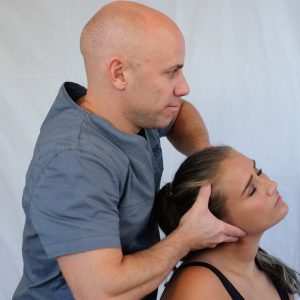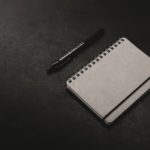How long does it take to recover from a stroke – Stroke is a medical condition characterized by a sharp interruption of the circulatory process in one or more areas of the brain. There are two different types of stroke – ischemic (a condition that develops when an artery becomes narrowed and partially or completely blocked) and hemorrhagic (which involves damage or complete rupture of a blood vessel). Ischemia causes interruption of blood circulation in the blood vessels of the brain and causes the death of its soft tissue areas.
The degree of tissue damage depends on the duration of hypoxia and the general state of human health. The extent and nature of brain damage includes the structure and duration of the subsequent stroke rehabilitation program. The most commonly cited recovery period after a stroke is 3 to 6 months.
- https://www.tathe.pl/chemia-budowlana/
- https://linos.pl/apple-music-jak-zrezygnowac/
- https://www.inprod.com.pl/co-robi-ortodonta-podczas-wizyt-kontrolnych/
Signs of a stroke
Stroke symptoms that should call emergency services right away include:
- Sudden weakness and/or numbness in the face and/or limbs, usually on one side of the body.
- Difficulty speaking.
- Dramatic loss of vision (in one or both eyes).
- Severe headache, dizziness.
- Unjustified uncoordinated movements.
It is important to remember: the sooner medical attention is given to a stroke, the better the chances of keeping as many neurons in the brain alive as possible, and often the patient lives longer. Emergency treatment is most effective 3-6 hours after the first manifestation of the disease. After this time, the changes in the affected areas of the brain can become irreversible, and recovery from a stroke can be very difficult.
How long does it take to recover from a stroke?
There is no single recovery period after a stroke, and the recovery time depends on the size and location of the stroke, the type of stroke, and the length of time it took from onset to getting help from a specialist.
Estimated recovery times are as follows:
- Stroke with minor neurological deficits – slight numbness of the face, limbs, visual disturbances, coordination disorders, dizziness. Partial healing occurs after 1-2 months, and complete healing is possible after 2-3 months, but it depends on the likelihood of recovery of the patient.
- Stroke with severe neurological disorders – severe paralysis of the face, limbs, severe coordination disorders. The ability to self-service appears in the patient after 6 months, and full convalescence lasts for years.
- Severe hemorrhagic and ischemic strokes with persistent neurological deficits leave patients with disabilities with paralysis and other deficits. Partial regeneration is possible within 1-2 years. In the case of severe neurological deficits, complete recovery is not possible because important clusters of brain neurons are necrotic and their functions cannot be taken over by neighboring cells.
It is important for patients to realize that recovery from any stroke should be continuous. Short-term daily activities not only help restore old skills and traits, but also prevent new strokes from appearing. A stroke rehabilitation plan for patients with acute cerebrovascular disorders, timely and effective stroke rehabilitation is the first and crucial step in recovery. Maximum recovery can be achieved only with the help of experienced specialists.
It is important to understand that rehabilitation after a stroke should be started as early as possible, from the first days of the disease, when the patient’s condition stabilizes. The local hemorrhage has not spread to a large area of the brain, and the patient is stable on the third or fourth day. With the beginning of this period, it becomes possible to start the healing process.
-
-
-
-
- Traditionally, stroke rehabilitation programs consist of three key steps:Stage 1: During this period, the patient is lying on his back, often with a severe stroke, and the patient is immobile. During this period, rehabilitation activities were limited by the patient’s condition and included systematic turning, specialized anti-decubitus massage and breathing exercises. The medical rehabilitation specialist talks to the patient all the time, even if he does not have a clear response to speech: passive listening activates attention, speech understanding is gradually regained. The first stage of recovery can last from a few days to several months, depending on the severity of the stroke.
- Second stage (early stage): In this stage, the patient can do some activities, but cannot get out of bed unaided. The patient undergoes passive physical therapy (physiotherapy – competitive gymnastics, massage), physiotherapy. Rehabilitation specialists are responsible for removing speech barriers and restoring patients’ memory. The early recovery phase can last from a few weeks to six months.
- The third phase is late rehabilitation: a period of active recovery of motor, mental and emotional functions and skills. The patient is able to do gymnastics on his own, try to sit on the bed and get out of bed. At this stage, occupational therapy (actions aimed at developing manual motor skills) plays an important role. Late recovery can take anywhere from six months to two years.
-
-
-
A key principle of a stroke rehabilitation program is an individualized approach to each patient’s recovery. Specialists carefully review the medical and medical history of each patient, analyze the degree of brain damage and impairment of basic functions, and assess the severity of the condition after a stroke. Then, develop an individualized treatment plan and course of treatment, and pre-plan the duration of individual stages.








